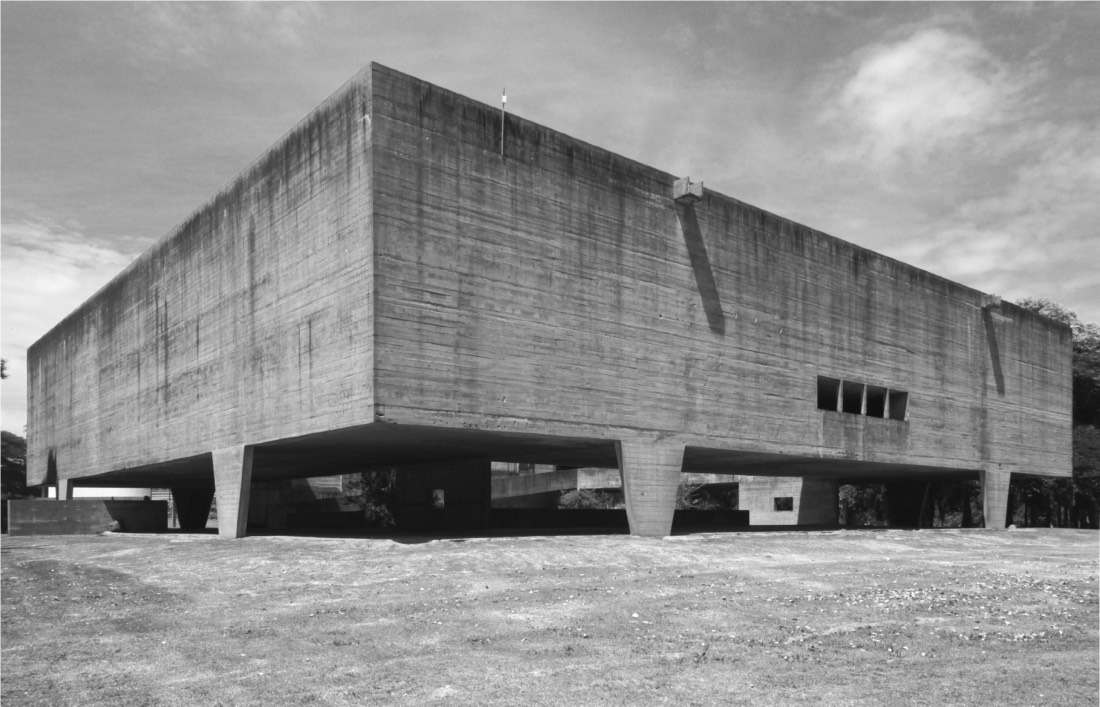Montevideo Municipal Ossuary
Narratives, arguments and historiographical representations
DOI:
https://doi.org/10.18861/ania.2022.12.2.3306Keywords:
Historiography, history, developmentalism, architecture, modernity, beton-brut, brutalism, Uruguay, Latin AmericaAbstract
The municipal ossuary number 2 was projected during the year 1959, in the municipal offices, by Nelson Bayardo and José Pedro Tizze to funerary urns. The risky and powerful structure of exposed reinforced concrete was built between 1960 and 1961 in the North Cemetery. The building was installed near a natural lake formed by a slope of the Miguelete stream, isolated in the picturesque landscape that resulted from the expansion of the park, designed by Luis Crespi in the early 1950s. As soon as the building was finished, the sculptor Edwin Studer made the great mural that covers the entire surface of the north-facing wall, in the inner courtyard.
The values that the building holds were presented in various local and foreign publications. This article explores the arguments made about the building published in the press, books and magazines. Those texts and notes that provide significant points of view, that offer interpretations and that use images to support the arguments have been considered.
The intention is to review those stories that managed to install this building as an unavoidable piece, in the first place, to understand the architecture made in Uruguay. Located next to the brick works by Eladio Dieste and Mario Payssé Reyes, the ossuary completes the local canonical trilogy, offering itself as a counterpoint for its material. The writings fulfilled an even more important task, recognizing the building as a key example of the so-called brutalist network in Latin America. Historiographical analysis fulfills a third function, establishing a starting point for new studies.
Downloads
References
Artucio, L.C. (1971). Montevideo y la arquitectura moderna. Montevideo: Nuestra Tierra.
Bayardo, N. (1965). Ha muerto Le Corbusier. Revista de la Facultad de Arquitectura, (6), 4-6.
Bayardo, N. (1963). Urnario del Cementerio del Norte. Revista de la Facultad de Arquitectura, (4), 8-17.
Bergdoll, B.; Comas, C.; Liernur, F.; y del Real, P.(2015). Latin Americain Construction: Architecture 1955-1980 Nueva York: MoMA.
Bullrich, F. (1969). Nuevos caminos de la arquitectura latinoamericana. Barcelona: Blume.
Bullrich, F. (1970). Arquitectura latinoamericana: 1930-1970. Buenos Aires: Sudamericana.
Bullrich, F. (1964). Cinco obras en Uruguay. Revista Summa, (3),40-47.
Browne, E. (1988). Otra arquitectura en América Latina. México D. F.: Gustavo Gili.
L'Architecture d'aujourd'hui. Architecture Sacrée, n° 125, abril-mayo 1966.
Le Corbusier (1948). Cuando las Catedrales eran blancas. Un viaje al país de los tímidos. Buenos Aires: Poseidón.
Lorente Mourelle, R. y Ramiro Bascans (1970). Uruguay. Panorama de su arquitectura contemporánea. Revista Summa, (27), 21-60.
Lousteau, C. (2 de febrero de 1975. La influencia de Le Corbusier o el poder de la literatura. El Día, Supl., s/p.
Nudelman, J.(2015). Tres visitantes en Paris. Los colaboradores uruguayos de Le Corbusier. Montevideo: CSIC.
Vera, L. (13 de diciembre de 1962). El urnario del cementerio del norte. Una obra del arquitecto Nelson Bayardo. Diario Época, s/p.

Downloads
Published
How to Cite
Issue
Section
License
Copyright (c) 2022 Mary Mendez

This work is licensed under a Creative Commons Attribution 4.0 International License.
The journal and its contents are licensed under the Creative Commons - Attribution 4.0 International License (CC BY 4.0). It is possible to copy, communicate and publicly distribute its content as long as the individual authors and the name of this publication are cited, as well as the publishing institution (Universidad ORT Uruguay).

